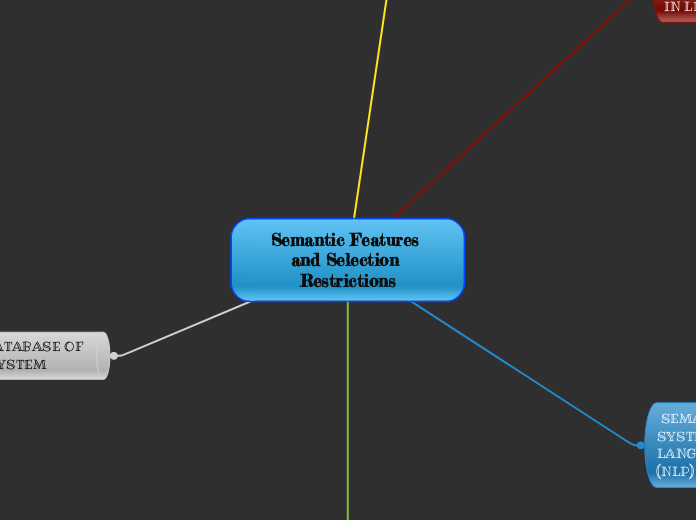realizată de JHON JAIRO SANCHEZ MEDINA 2 ani în urmă
215
Semantic Features and Selection Restrictions

realizată de JHON JAIRO SANCHEZ MEDINA 2 ani în urmă
215

Mai multe ca acesta
In each lexeme all documents that contain some useful lexicographic information about that lexeme or characteristic are mentioned.
Contains bibliographic information on individual lexemes, cf. Krylov 198~).
The vocabulary consists of about 12,500 words. The morphological information is extracted from the Zalizniak 1977 dictionary.
vocabulary presented in a machine-readable format and consisting of several domains.
Semantic features
[ + speech act verb], [ + performative verb], [ + movement verb], [ + kinship term], ]+Body Part], [+Person (as opposed to a physical body)], [+Parameter], etc.
In TG, semantic features do not participate in the formulation of grammatical rules.
The categorical characteristics of the argument must agree with the transitive characteristic predicted for this argument by the predicate.
Semantic features can make a substantial contribution. In syntactic analysis.
The proper identification of a syntactic construction depends on the semantic agreement of the words.
categorical feature of a The argument can help choose the correct lexical meaning of the predicate.
b. l']eTfl BblXO,I~HT Ha ay~xafiKy.
Ma.ab'mK 'boy' has the feature [+Movable] and the verb ~h~xg.&~.Tb has its usual meaning of a verb of motion.
a.Oxna rocTan~ttbt BHXOj~$1T Ha ~or;
the word .rocT~HX_U~a 'hotel' has a categorial feature [-Movable]; hence the stative meaning of the verb n_~xoztnr~ 'go out'
Disambiguation of a lexically homonymous noun by addressing transfer features of the predicate.
Thus, semantic features are usable for disambignation of words in context.
semantic agreement.
The adverbial of purpose is only possible in the context of a verb.
Denotes controlled action and, consequently, having an agent endowed with free will.
opposite to the reduction of conjunctions, and semantic agreement is what gives an idea of how this transformation is going to be carried out.
Dahlgren, McDowell 1986: example The cat did not drink the milk. It spilled.
As the verb to spill presupposes a subject which is a liquid, the pronoun may be unambiguously associated with the milk and not with the cat.
(as in the sea he smiled).
predicates capable of introducing indirect question or its equivalent - parameter word; cf.
I know why he arrived; I know the reason of his arriva! , on the one hand, and *!. believe why h~ ca_me, *.I believe the reason of his arrival - on the other.
Was shown that the Russian conjunctions qTo 'that' and KaK 'as' obey semantic distribution: qTO after verbs with the semantic component 'know/believe' (cf. similar considerations on English in Wierzbicka 1988) and Kag - after words with the 'perceive' component, cf. I;1 noMam, '~TO M~ TaM Kyna.al4Cb y fl noMmo, KaK MU TaM Kynam4cb.
the kind of predicates that allow Neg-Raising. Negative predicates such as believing that
(cf. Ha6.am~aTbCg, qynCTnonarbc~) or predicatives (cf. na~xo, c.nNmno)